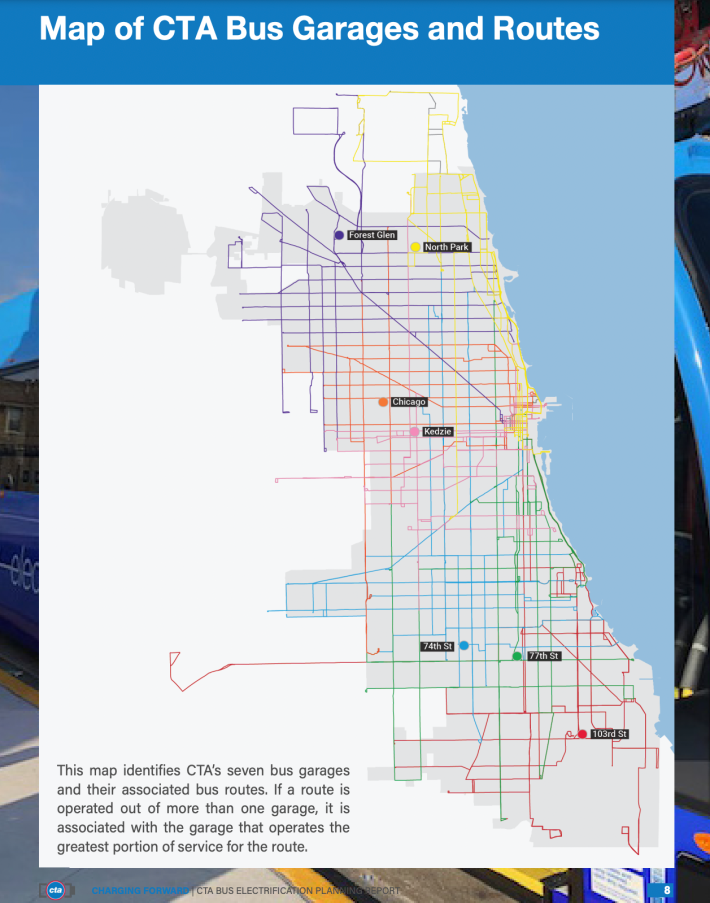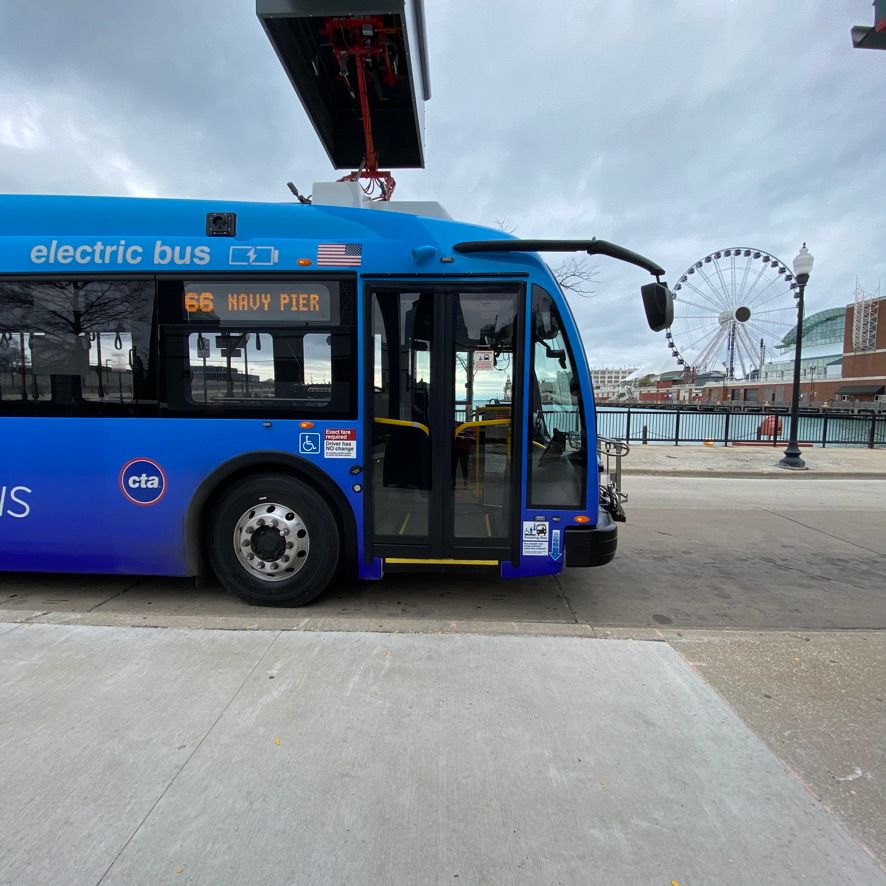The CTA's launch of six all-electric buses along the #66 Chicago Avenue bus, which kicked off last April, got a thumbs-up from customers for providing smooth, quiet, no-emissions rides. This week the agency announced "Charging Forward," its first-ever roadmap for electrifying the entire fleet, although it's not slated to happen until 2040.
It’s worth noting that Shenzhen, China, a city with over four times the population of Chicago and more than eight times as many municipal buses (16,000 versus 1,864) had already electrified its entire fleet by 2020.
Read the full "Charging Forward" report here.
"The unveiling of the ‘Charging Forward’ planning study helps set the course for our agency’s next destination – full-electrification by 2040 – all while ensuring that equity, the environment and the communities we serve are at the forefront of this next big endeavor,” said CTA President Dorval R. Carter, Jr. in a statement. The study was funded by The Joyce Foundation, and in partnership with Civic Consulting Alliance.
According to the agency, in addition to replacing its over 1,800 buses, supporting and maintaining an all-electric fleet will require investments and upgrades to facilities and other supporting infrastructure, including charging equipment. The study projects that the entire endeavor would cost between $1.8 and $3.1 billion, not including the base cost of maintaining the existing fleet and facilities.

The CTA currently operates seven bus garages across the city, and the the vehicles are serviced at a heavy maintenance facility on the Far South Side. The agency says all of these would need to be retrofitted with charging infrastructure. "This is no small undertaking and requires the careful coordination of many interrelated investments and requires consistent state and federal funding support to achieve an ambitious target," the CTA said in a press release.
The report provides strategic recommendations on different aspects of the electrification project including (CTA's language):
- Which technologies to invest in
- Where to install charging infrastructure
- How to sequence the electrification of garages and routes
- How to ensure that the related facility upgrades are coordinated with other modernization needs to maximize cost effectiveness and overall system reliability
- Outlining an achievable transition timeline for meeting the agency’s 2040 conversion goal
The agency says that the completion of the study, puts the agency in a good position to win funding, advocate for policies, and encourage technological improvements that will help make the plan a reality.
The CTA originally introduced two all-electric buses in 2014, and currently has 11 e-buses in service. Another 14 are being outfitted at garages and slated to be rolled out later this year. The agency has garnered over $130 million in grants to continue expanding the program.
The Chicago Avenue bus route runs between the Austin neighborhood and Navy Pier. The CTA says it wants to prioritize routes serving South and West side communities with poor air quality due to heavy industry. In particular, the agency plans to electrify bus lines that provide access to the 95th/Dan Ryan Red Line station.

“I applaud the use of equity measures to sequence the implementation," said Jacky Grimshaw, vice president, of government affairs at the Center for Neighborhood Technology. "This recognizes the reality of the past two years that essential workers have continued to ride transit. Economically disadvantaged areas of Chicago are being prioritized and will be the earliest to benefit from positive air quality impacts."
Active Transportation Alliance spokesperson Kyle Whitehead also expressed enthusiasm for the plan for cleaner buses, with an emphasis on underserved communities. "But we can’t forget that a packed diesel bus is also good for the environment given the number of cars it’s replacing on our neighborhood streets."
Whitehead added that while making the transition to electric vehicles, the CTA should also work with the Chicago Department of Transportation to make buses faster and more reliable so more people ride them. "Relatively low-cost investments like bus lanes and transit signal priority could be implemented tomorrow and would help reduce emissions while enhancing mobility for Chicagoans who need it the most. An empty electric bus doesn’t represent progress on climate."
Metropolitan Planning Council transportation director Audrey Wennink echoed Whitehead's sentiments. "The majority of CTA passengers ride buses, and the city is encouraging more people to live along bus corridors via its Equitable Transit Oriented Development plans," she said. "Therefore, it is good to see CTA define a path forward for getting to a zero emissions bus fleet so that both the climate and health impacts of bus emissions are lessened as soon as possible, prioritizing investments in neighborhoods that need pollution reductions most urgently. While CTA works to electrify buses it is also critical to improve the reliability of bus service so more people choose to ride transit, which will reduce the substantial climate and emissions impacts of personal autos."





